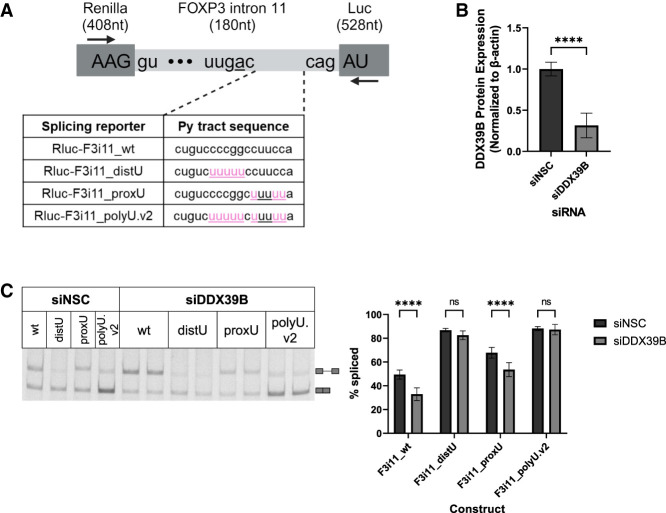FIGURE 6.
Cytidines in the distal half of the py tract of FOXP3 intron 11 mediate its sensitivity to DDX39B. (A) Schematic diagram of FOXP3 intron 11 splicing reporters. The sequence of FOXP3 intron 11 was inserted into the open reading frame of Renilla luciferase. The sequence of all constructs remains the same except for the py tract sequence (20 nt upstream of the 3′SS). Highlighted in pink are nucleotide changes made to Rluc-F3i11_wt to create a stretch of five Us in the distal half of the py tract (Rluc-F3i11_distU), proximal half (Rluc-F3i11_proxU), or in both halves of the py tract (Rluc-F3i11_polyU.v2). Black arrows represent the location of primers used for end point PCR to quantify splicing efficiency (created with BioRender). (B) Quantification of siRNA-mediated depletion of DDX39B (siDDX39B) compared to siNSC. Quantification represents the average ± SD of nine biological replicates from three independent experiments; (****) P < 0.0001, Student's t-test. (C) End point PCR analysis of FOXP3 intron splicing from the FOXP3 intron 11 py tract mutant splicing reporters in HeLa cells treated with siNSC or siDDX39B. Quantification represents the average ± SD of nine biological replicates from three independent experiments; (****) P < 0.0001, one-way ANOVA.

